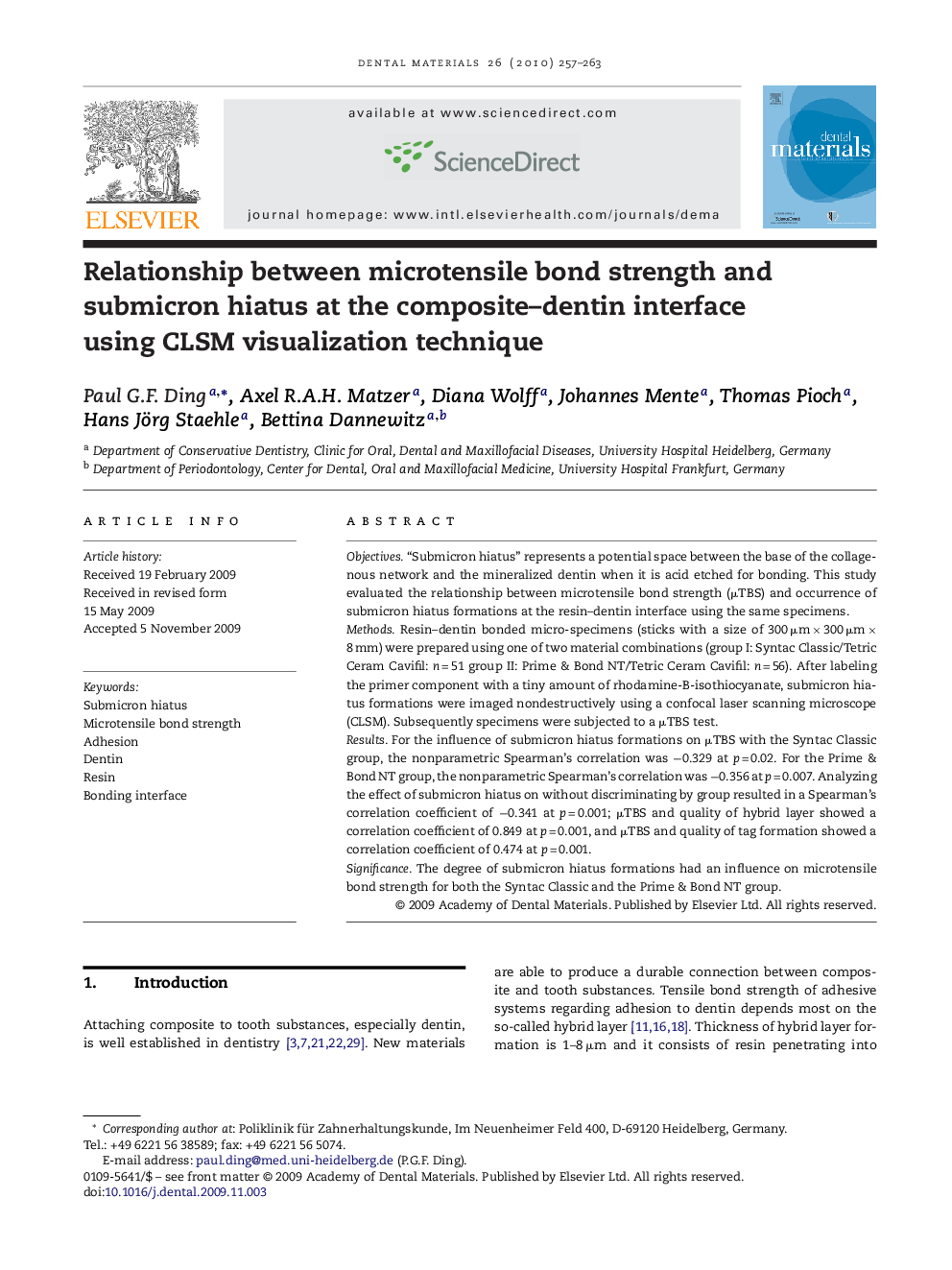| Article ID | Journal | Published Year | Pages | File Type |
|---|---|---|---|---|
| 1422107 | Dental Materials | 2010 | 7 Pages |
Objectives“Submicron hiatus” represents a potential space between the base of the collagenous network and the mineralized dentin when it is acid etched for bonding. This study evaluated the relationship between microtensile bond strength (μTBS) and occurrence of submicron hiatus formations at the resin–dentin interface using the same specimens.MethodsResin–dentin bonded micro-specimens (sticks with a size of 300 μm × 300 μm × 8 mm) were prepared using one of two material combinations (group I: Syntac Classic/Tetric Ceram Cavifil: n = 51 group II: Prime & Bond NT/Tetric Ceram Cavifil: n = 56). After labeling the primer component with a tiny amount of rhodamine-B-isothiocyanate, submicron hiatus formations were imaged nondestructively using a confocal laser scanning microscope (CLSM). Subsequently specimens were subjected to a μTBS test.ResultsFor the influence of submicron hiatus formations on μTBS with the Syntac Classic group, the nonparametric Spearman's correlation was −0.329 at p = 0.02. For the Prime & Bond NT group, the nonparametric Spearman's correlation was −0.356 at p = 0.007. Analyzing the effect of submicron hiatus on without discriminating by group resulted in a Spearman's correlation coefficient of −0.341 at p = 0.001; μTBS and quality of hybrid layer showed a correlation coefficient of 0.849 at p = 0.001, and μTBS and quality of tag formation showed a correlation coefficient of 0.474 at p = 0.001.SignificanceThe degree of submicron hiatus formations had an influence on microtensile bond strength for both the Syntac Classic and the Prime & Bond NT group.
